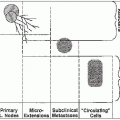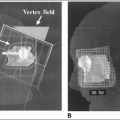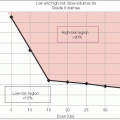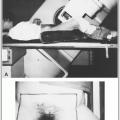Primary Tumor (T)a |
TX |
Primary tumor cannot be assessed |
T0 |
No evidence of primary tumor |
Tis |
In situ primary tumor |
|
Cutaneous Squamous cell/other Cutaneous Carcinoma |
T1 |
Tumor 2 cm or less in greatest dimension with <2 high risk featuresb |
T2 |
Tumor >2 cm in greatest dimension or |
|
Tumor any size with two or more high risk featuresc |
T3 |
Tumor with invasion of maxilla, orbit, or temporal bone |
T4 |
Tumor with invasion of skeleton (axial or appendicular) or perineural invasion of skull base |
|
Merkel Cell Carcinoma |
T1 |
≤2 cm maximum tumor dimension |
T2 |
>2 cm but not more than 5 cm maximum tumor dimension |
T3 |
Over 5 cm maximum tumor dimension |
T4 |
Primary tumor invades bone, muscle, fascia, or cartilage |
|
Melanoma of the Skin |
T1 |
Melanomas <1.0 mm in thickness |
T1a |
without ulceration and mitosis <1/mm2 |
T1b |
with ulceration or mitoses >1/mm2 |
T2d |
Melanomas 1.01-2.00 mm |
T3d |
Melanomas 2.01-4.00 mm |
T4d |
Melanomas >4.0 mm |
Regional Lymph Nodes (N) |
NX |
Regional lymph nodes cannot be assessed |
N0 |
No regional lymph node metastasis |
|
Cutaneous Squamous cell/other Cutaneous Carcinoma |
N1 |
Metastasis in a single ipsilateral lymph node, 3 cm or less in greatest dimension |
N2 |
Metastasis in a single ipsilateral lymph node, more than 3 cm but not more than 6 cm in greatest dimension; or in multiple ipsilateral lymph nodes, none more than 6 cm in greatest dimension; or in bilateral or contralateral lymph nodes, none more than 6 cm in greatest dimension |
N2a |
Metastasis in a single ipsilateral lymph node, more than 3 cm but not more than 6 cm in greatest dimension |
N2b |
Metastasis in multiple ipsilateral lymph nodes, none more than 6 cm in greatest dimension |
N2c |
Metastasis in bilateral or contralateral lymph nodes, none more than 6 cm in greatest dimension |
N3 |
Metastasis in a lymph node, more than 6 cm in greatest dimension |
|
Melanoma of the Skin |
N1 |
1 node with micrometastasise or macrometastasisf |
|
2-3 nodes with micrometastasise or macrometastasisf |
N2c |
2-3 nodes, in transit met(s)/satellite(s) without metastatic nodes |
N3 |
Clinical: >1 node with in transit met(s)/satellite(s); pathologic: 4 or more metastatic nodes, or matted nodes, or in transit met(s)/satellite(s) with metastatic node(s) |
|
Merkel Cell Carcinoma |
N1 |
Metastasis in regional lymph node(s) |
|
Micrometastasisg |
|
Macrometastasish |
N2 |
In transit metastasisi |
Distant Metastasis (M) |
M0 |
No distant metastasis |
M1 |
Distant metastasis |
|
Melanoma divides M1
M1a: Metastases to skin, subcutaneous tissues, or distant lymph nodes; M1b: Metastases to lung; and M1c: Metastases to all other visceral sites or distant metastases to any site combined with an elevated serum LDH |
|
Merkel Cell Carcinoma divides M1
M1a: Metastasis to skin, subcutaneous tissues or distant lymph nodes; M1b: Metastasis to lung; and M1c: Metastasis to all other visceral sites |
a In the case of multiple simultaneous tumors, the tumor with the highest T category will be classified, and the number of separate tumors will be indicated in parentheses, for example, T2 (5).
b High risk features for the primary tumor (T) staging:
Depth/invasion: >2 mm thickness, Clark level > IV, perineural invasion
Anatomic location: primary site ear, primary site hair-bearing lip
Differentiation: poorly differentiated or undifferentiated
c Excludes cSCC of the eyelid.
d T2 to T4 have substages a and b, which indicate without ulceration or with ulceration, respectively
e Micrometastases are diagnosed after SLN biopsy and completion lymphadenectomy (if performed).
f Macrometastases are defined as clinically detectable nodal metastases confirmed by therapeutic lymphadenectomy or when nodal metastasis exhibits gross extracapsular extension.g Micrometastases are diagnosed after sentinel or elective lymphadenectomy.
h Macrometastases are defined as clinically detectable nodal metastases confirmed by therapeutic lymphadenectomy or needle biopsy.
i In transit metastasis: a tumor distinct from the primary lesion and located either (a) between the primary lesion and the draining regional lymph nodes or (b) distal to the primary lesion |
Source: Staging from Edge SB, Byrd DR, Compton CC, et al., eds. AJCC cancer staging manual, 7th ed. New York, NY: Springer Verlag, 2009, with permission. |










